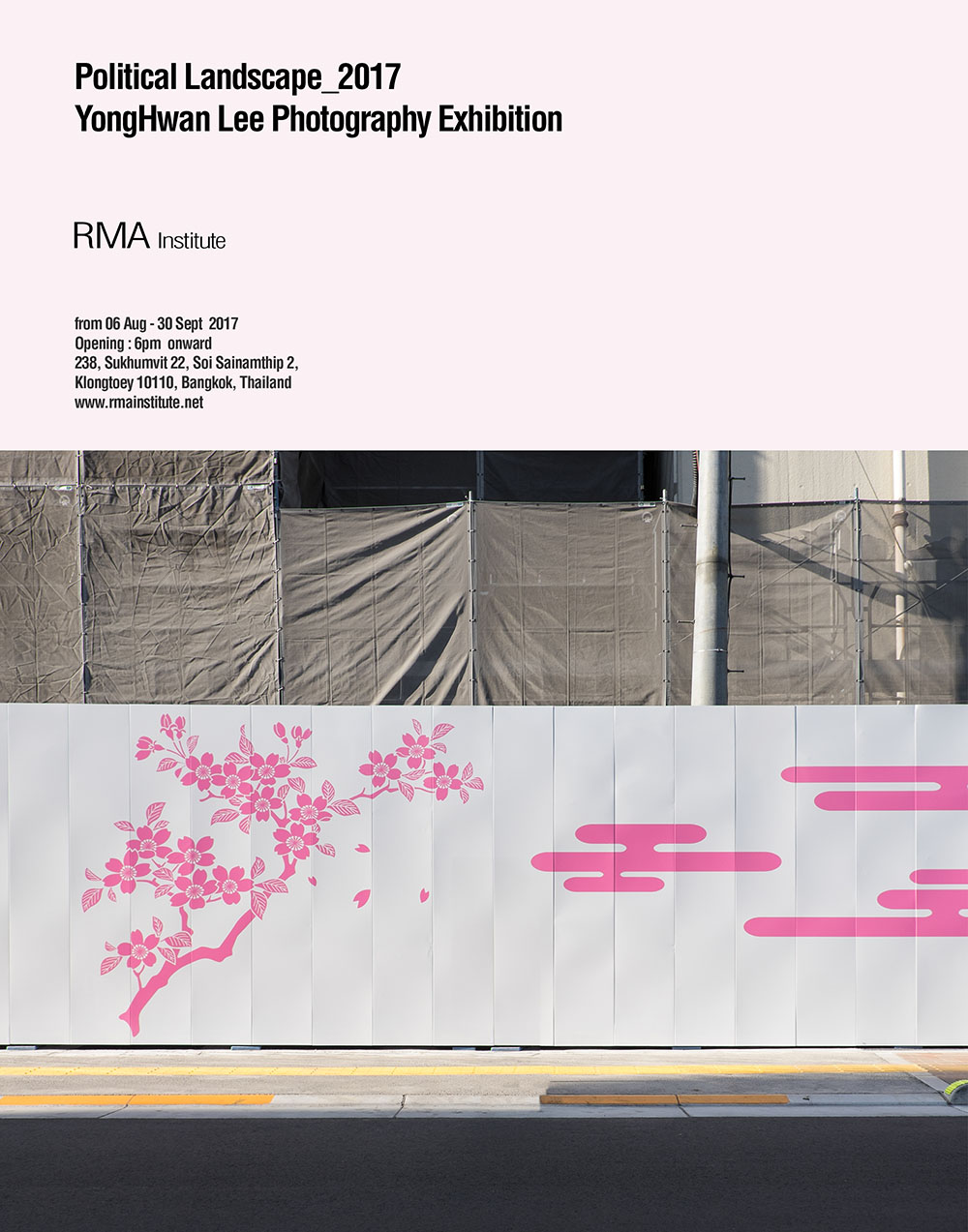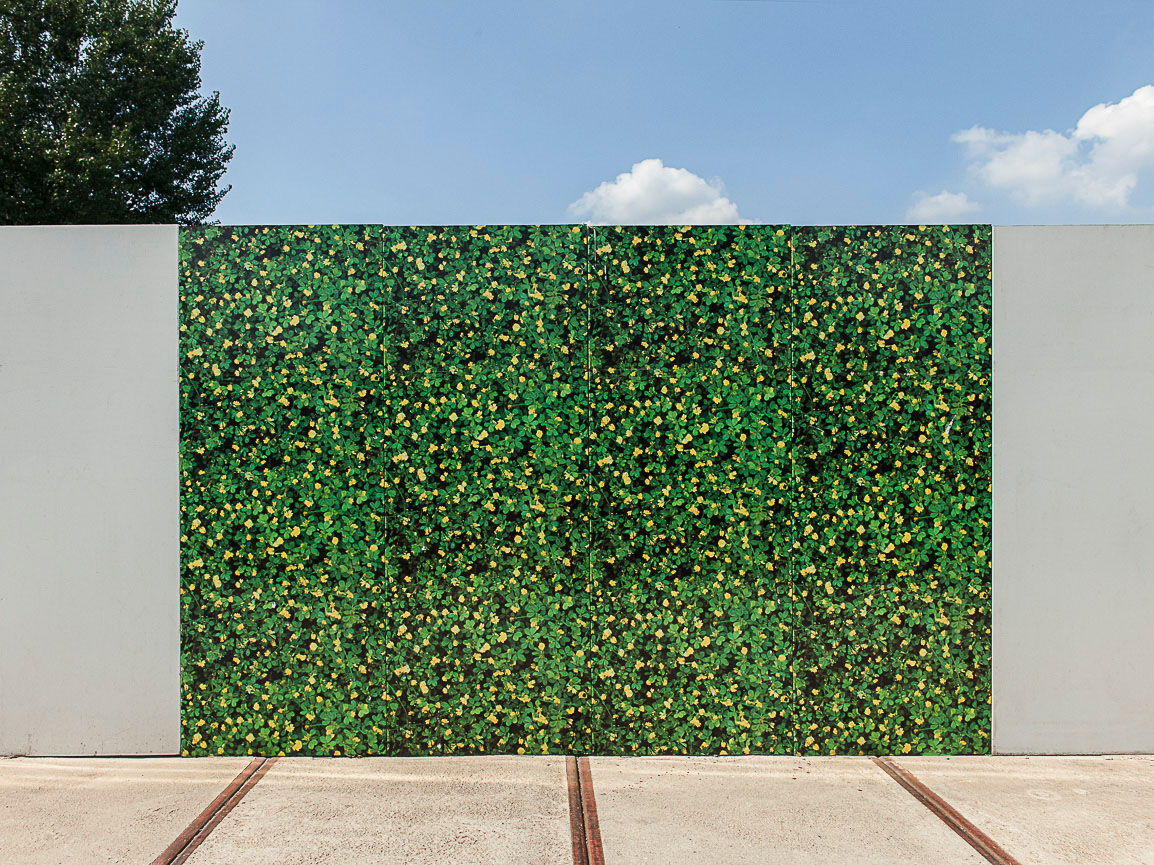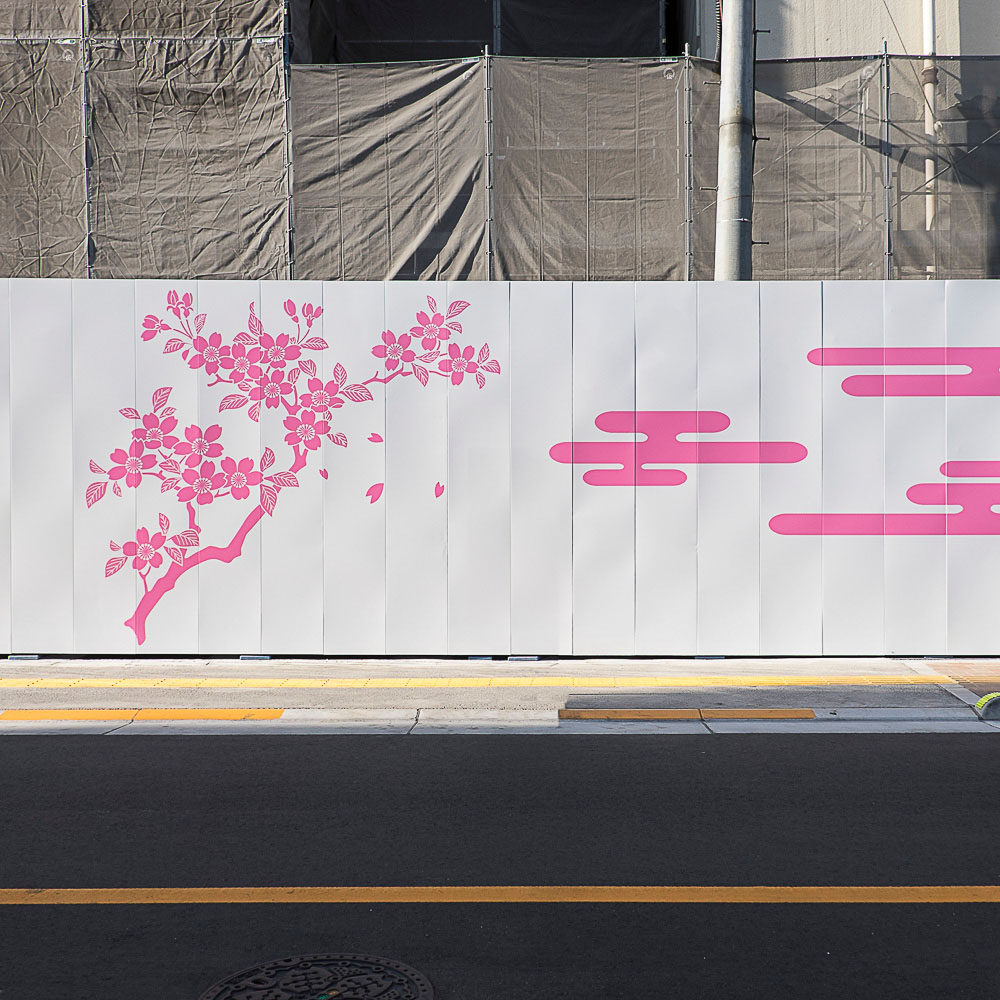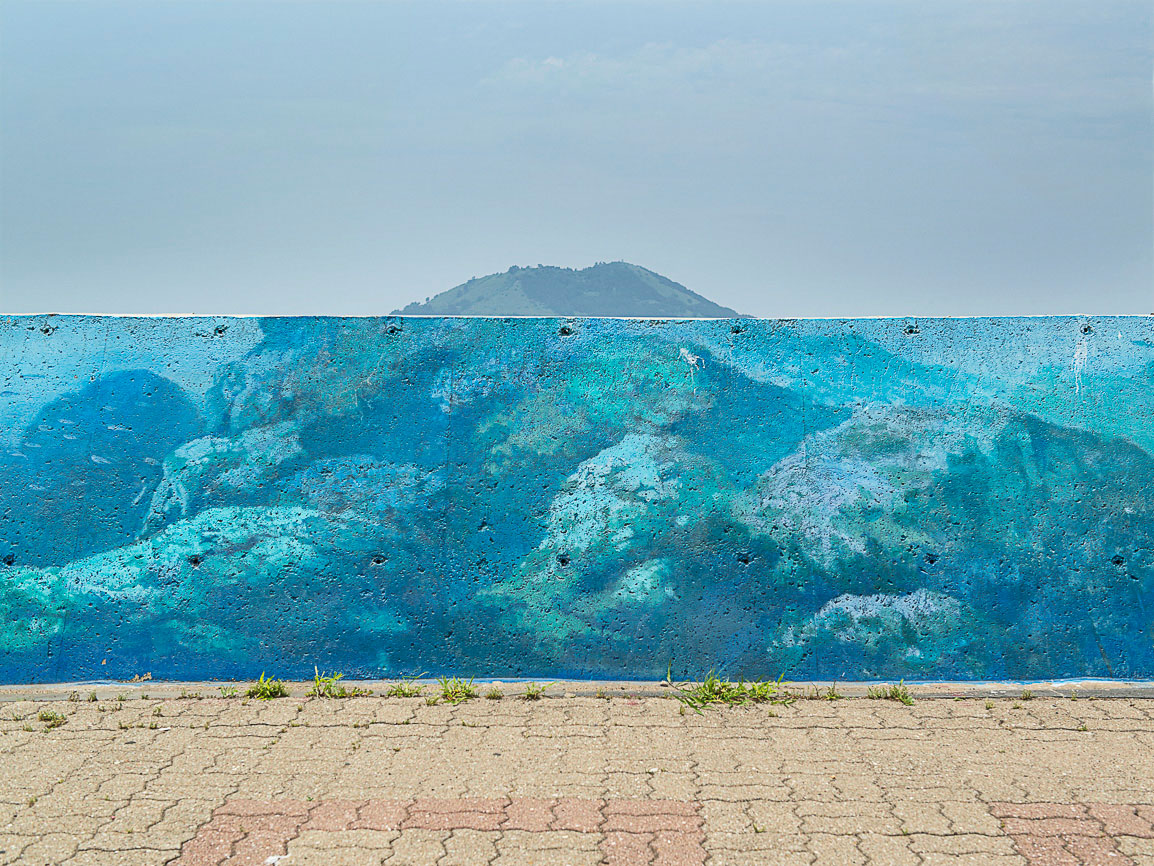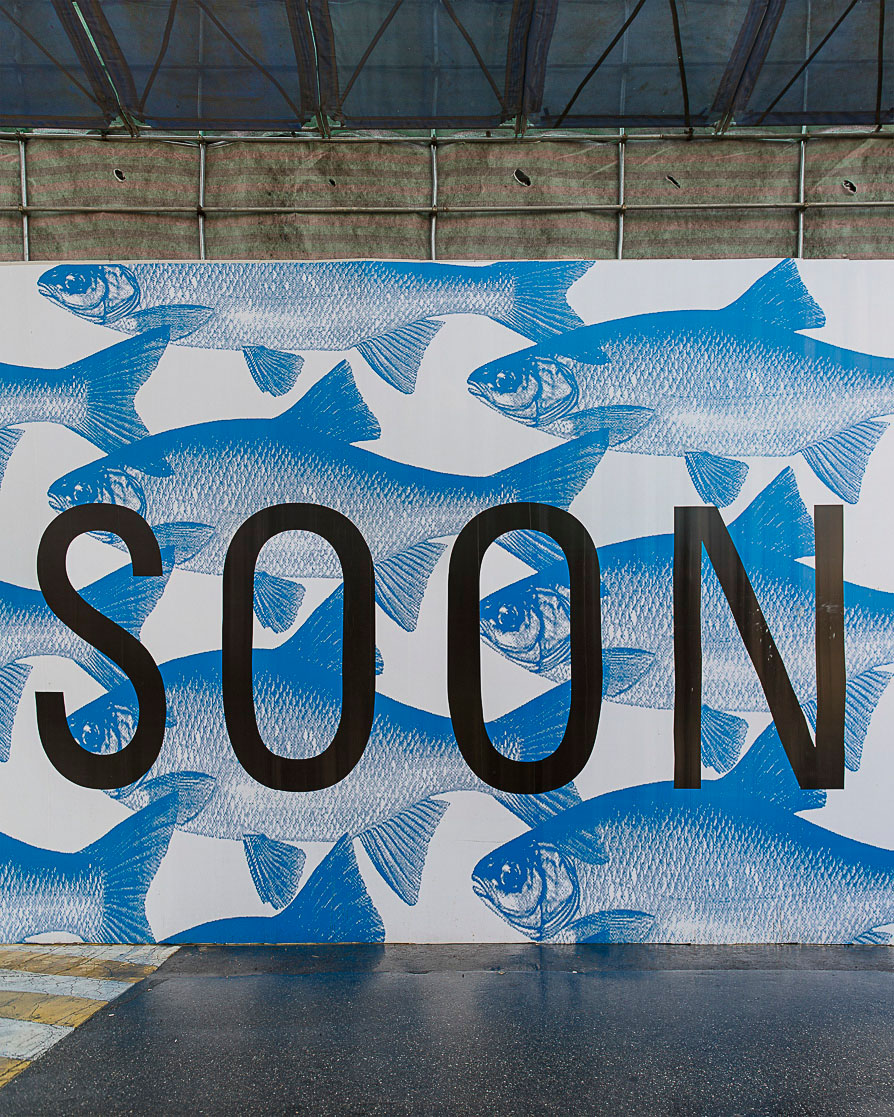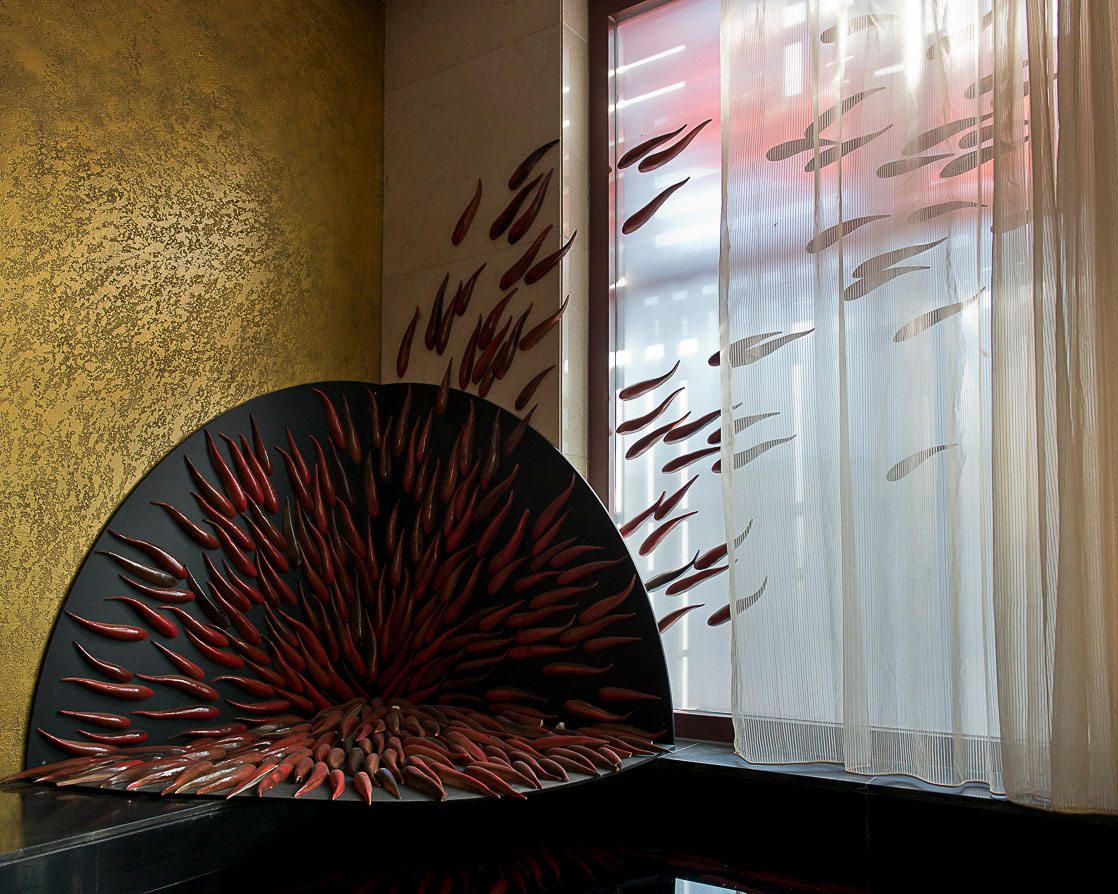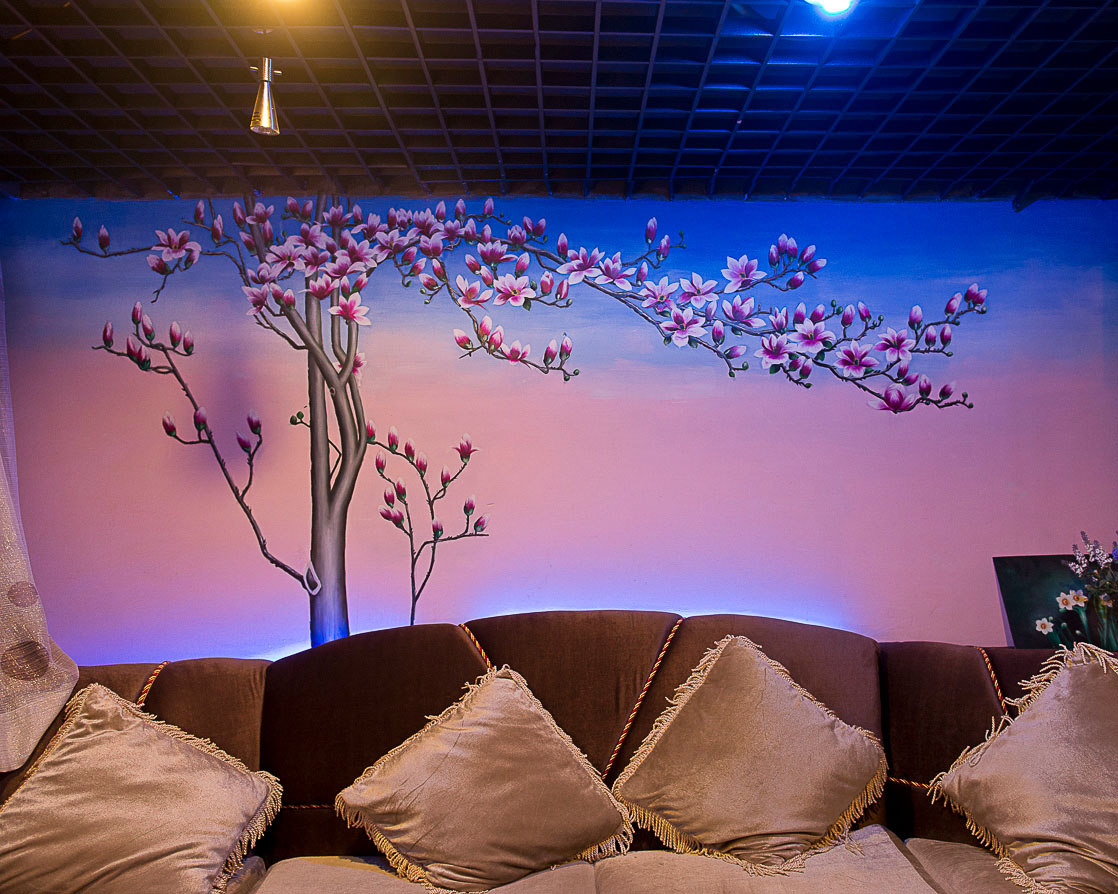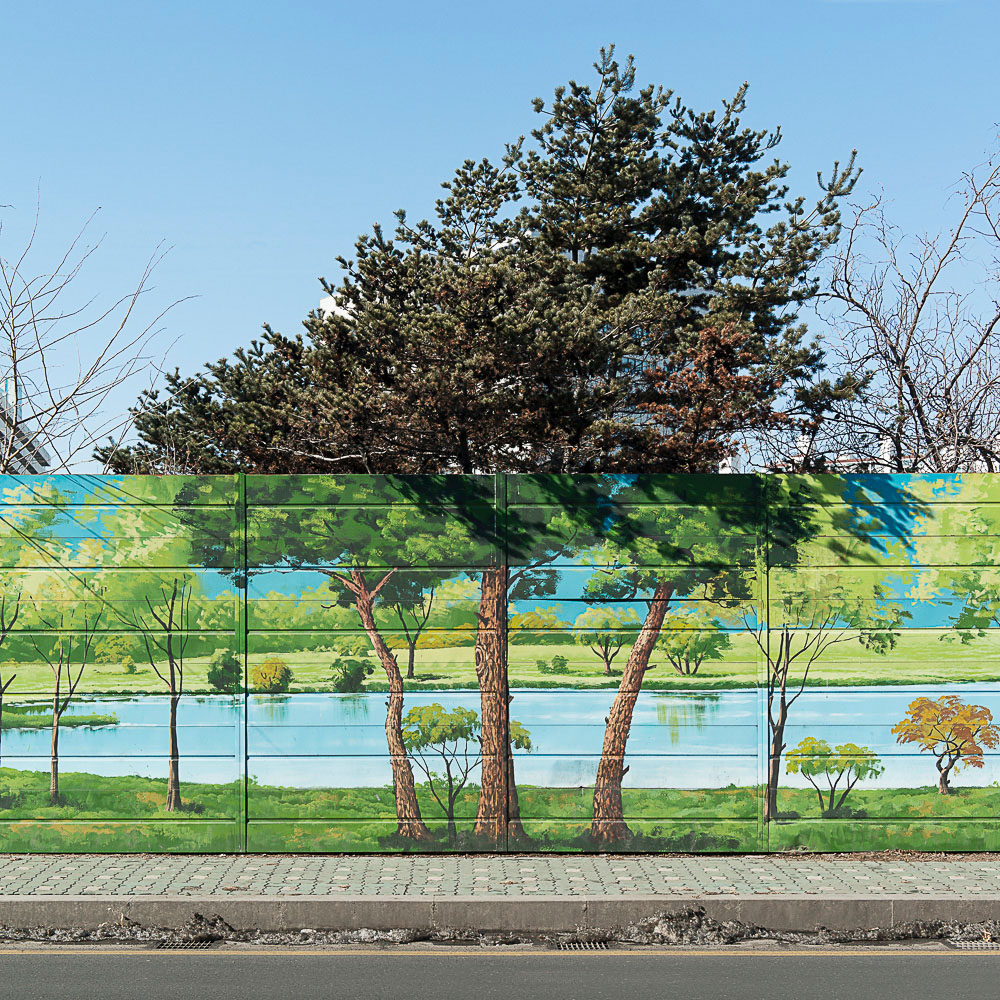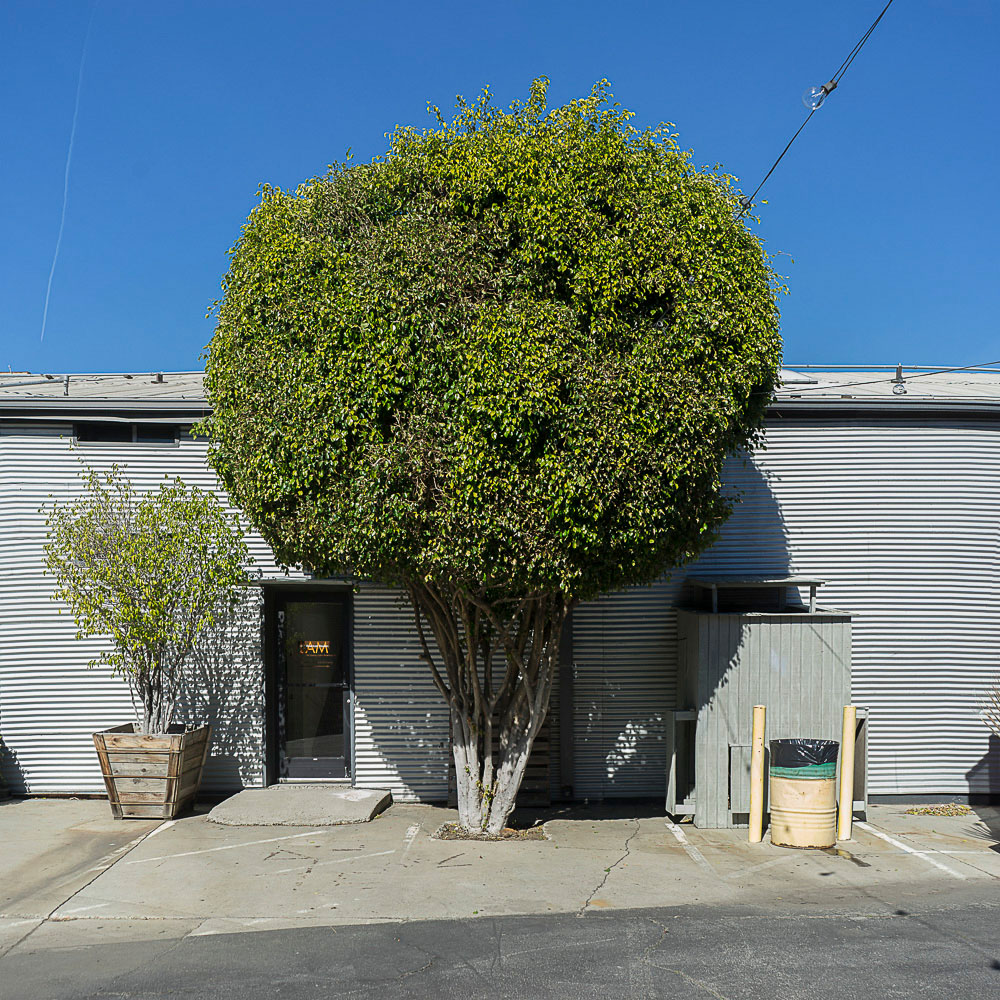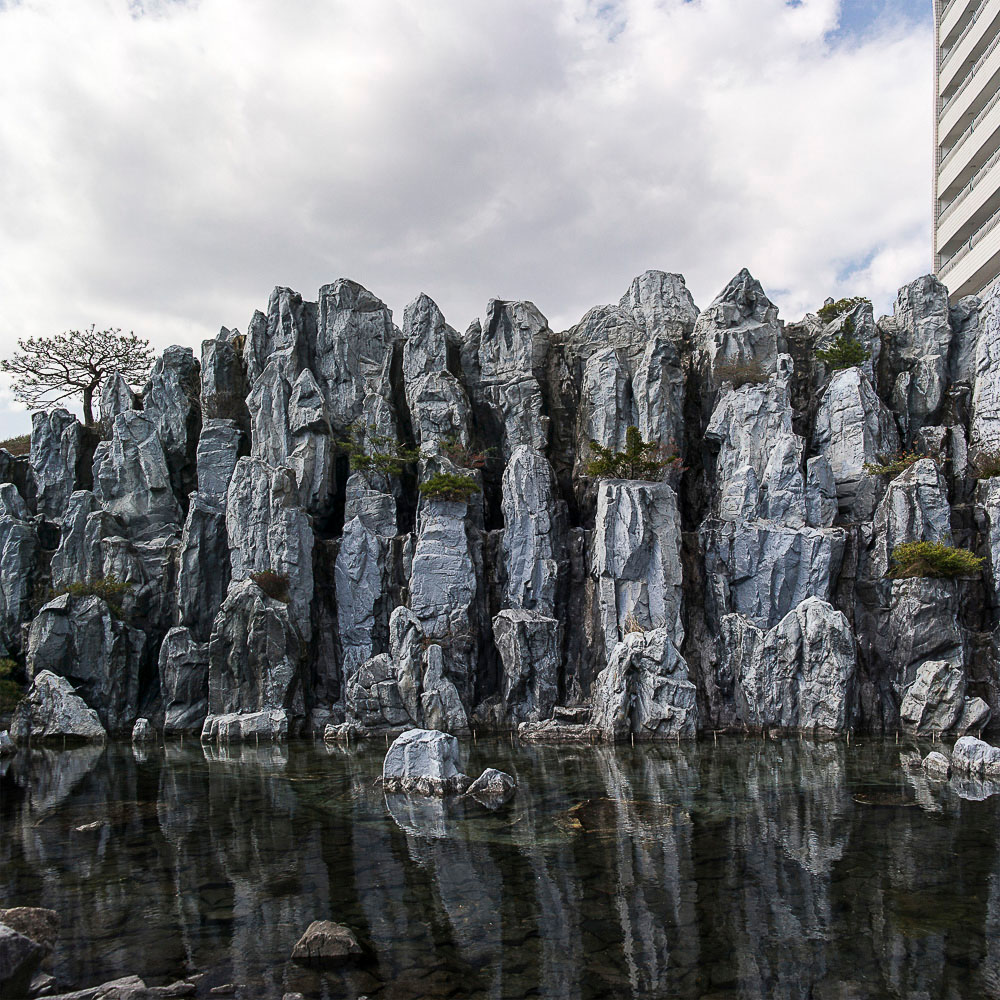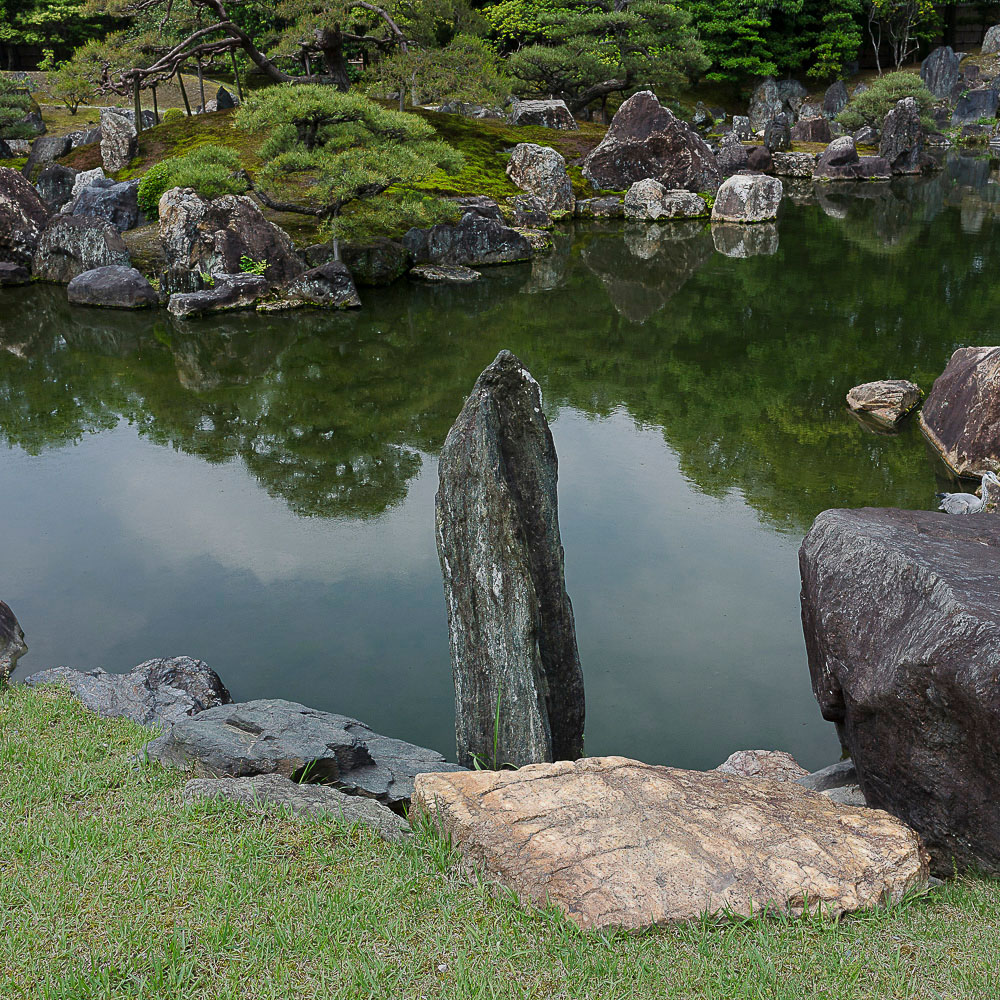중앙대학교 사진학과 교수이자 사진작가인 이용환 교수는 방콕의 비영리 갤러리인 'RMA Institute' 두 달의 기간 동안 개인전을 가진다. 방콕은 해외작가들이 많이 거주하면서 작업하는 지역이다. 'RMA Institute'는 사진과 미디어 아트 전문 갤러리로 일 년에 다섯에서 여섯 명의 국제적인 작가들을 초대전시하는 저명한 갤러리이다. ‘정치적인 아젠다가 우리의 풍경을 변화시킨다’는 ‘정치적인 풍경’전은 2010년부터 시작해서 현재까지 진행하는 프로젝트이다. 이 작품들은 이미 독일의 순회전과 중국의 아트페스티벌 등을 통해서 알려진 작업들이다. 이번 전시에는 구작과 신작을 어울려 총 17작품을 전시하게 된다.
중앙대학교 사진학과 교수이자 사진작가인 이용환 교수는 방콕의 비영리 갤러리인 'RMA Institute' 두 달의 기간 동안 개인전을 가진다. 방콕은 해외작가들이 많이 거주하면서 작업하는 지역이다. 'RMA Institute'는 사진과 미디어 아트 전문 갤러리로 일 년에 다섯에서 여섯 명의 국제적인 작가들을 초대전시하는 저명한 갤러리이다. ‘정치적인 아젠다가 우리의 풍경을 변화시킨다’는 ‘정치적인 풍경’전은 2010년부터 시작해서 현재까지 진행하는 프로젝트이다. 이 작품들은 이미 독일의 순회전과 중국의 아트페스티벌 등을 통해서 알려진 작업들이다. 이번 전시에는 구작과 신작을 어울려 총 17작품을 전시하게 된다.
정치적인, 너무나 정치적인 (Political, All Too Political)
– 이용환의 카메라 옵스큐라에 담긴 동굴 밖 세상의 어떤 풍경들 –신성균/홍익대학교, 사진미학
◼ 플라톤의 동굴을 떠나며
빛이 들어오지 못하는 깊은 동굴이 있다. 이 동굴 안에는 이곳에서 태어나 한번도 바깥 세상을 본 적이 없는 죄수들이 살고 있다. 이들의 손발에는 쇠고랑이 채워져 있고 바라볼 곳은 오직 벽 뿐이다. 간수들은 동굴 밖의 존재들을 본뜬 틀과 일렁이는 모닥불을 이용하여 벽에 그림자를 보여준다. 플라톤의 ‘국가’ 에 나오는 ‘동굴 우화’ (Allegory of the Cave, Republic, Book 7) 이다. 그림자는 어떤 실물의 진실을 충분히 보여주지 못한다. 하물며 실물을 본뜬 틀의 그림자는 그 실물의 진실과 더욱 거리가 멀게 된다. 이 우화는 죄수 한명이 풀려나 동굴 밖으로 나갈 수 있게 되었다고 가정한다. 눈부신 햇빛을 처음 체험하고 세상을 구경한 그는 동굴로 돌아가서 자신이 본 것들을 이야기한다. 하지만 평생토록 그림자 놀이에 익숙해진 동료들이 어떻게 그의 말을 믿을 수 있겠는가?
이제 그 죄수가 세상의 모습을 사실적으로 담을 수 있는 어떤 도구를 갖고 동굴 밖으로 다시 나간다고 생각해보자. 사진은 카메라 앞에 있었던 어떤 존재와 사건에 관한 기록일 뿐만 아니라, 그 “세부 묘사에 대한 상상할 수 없는 정교함” (사진의 발명에 관한 프랑스 의회 보고서, 1839) 으로 우리가 본 것을 잘 기억할 수 있도록 도와준다. 이런 속성을 지닌 사진은 많은 경우 전하려는 메시지에 설득력을 더해 주는 도구가 된다. ‘카메라 옵스큐라’ (Camera Obscura, 어두운 상자, 오늘날 카메라의 기원) 를 들고 길을 떠나는 죄수, 동료들로 하여금 스스로 생각하고 변화하도록 만드는 한 그는 더 이상 죄수가 아닌 철학자나 예술가로 불리게 될 것이다. 동굴이란 물리적 장소라기보다는 어떤 이유와 형태로 우리를 속박하는 정신 또는 관념의 세계를 뜻한다. 오늘날 다양하고 복잡한 사회 공동체 내의 인간 개인은 동시에 여러 개의 동굴에서 지내는 경우도 많다.
◼ 이용된 가상과 통제된 실재
사진가는 결국 다시 돌아와서 보여주고 나누기 위해 동굴을 떠난다. 즉, 보고 느끼고 사유한 것들을 다른 사람들과 공유하기 위해 사진을 한다. 이용환도 그 중의 한 사람이다. 지난 2014년 12월, 어느 독일 미디어 예술가 단체의 초청으로 뒤셀도르프에서 열린 개인전에서 이용환이 강연했던 내용을 참고로 하여 그의 작품을 살펴보면, 그는 대립되는 본성을 지닌 두개의 존재가 같은 시공간에 병치 (juxtaposition) 되어 있는 현상에 주목하고 있다. 조국 민주화 과정의 격변기에 대학 시절을 보낸 세대로 자신을 소개하는 그의 잠재의식에는 어떤 강제되거나 통제된 조화에 대한 ‘불편함’ (inconvenience) 이 은거하는 것 같다. 이것이 그가 일상에서 우연히 마주한 어떤 ‘대상’ (object) – 또는 ‘풍경’ (landscape) 이라고 하자 – 에 의해 트리거 (trigger) 되면서 의식의 표면으로 부상하는 사유적 체험을 사진으로 시각화 하였다고 볼 수 있다.
그 ‘불편함’ 이라는 이름의 동굴 속에서 지내던 어느 날, 그는 집 근처에 있는 지하철 공사장의 가림막이 갑자기 풍경사진으로 도배되어 있음을 본다. 북유럽 같은 곳에서 볼 수 있는 울창한 침엽수림의 사진이었다. 가림막 이미지의 가상과 주변 사물의 실재로 이루어진 하나의 거대하며 병치스러운 풍경이 인식되었다. 언제부터인지 도심 곳곳의 공사장이 그런 모습으로 바뀌고 있음도 문득 깨달았다. 녹색 환경의 결핍 속에 살아가는 시민에 대한 세심한 배려라기보다는 도시 미관의 개선을 정치적으로 이용하려는 일종의 프로파간다 (propaganda) 처럼 느껴졌다. 겉보기 풍경 이면의 이데올로기 (ideology) 즉, 가면을 쓴 생각은 무엇일까? 그 모든 것 너머의 이데아 (idea) 는 과연 무엇일까? 이용환의 새로운 연작 ‘정치적 풍경’ (Political Landscape) 의 동기가 된 사건이다.
사진 이미지가 곧 가상 (the virtual) 은 아니다. 그것은 재현 (representation) 이며, 어떤 대상의 사실적 이미지라는 한정된 자격으로서는 실재 (the real) 이다. 다만, 그 이미지가 대상을 지시하는 기호로서의 역할에 머무르지 않고 대상 자체인 것처럼 작용하며 인식의 혼란을 일으킬 때 가상이라고 부른다. 어찌 공사장 가림막 뿐이랴? 오늘날의 세상이 이런 가상으로 가득하면 할수록 그 가상들이 만들어내는 보편적인 의미는 오히려 실재와 진실에 대한 목마름으로 수렴한다는 사실은 또 하나의 아이러니 (irony) 이다. 바로 이것이 이용환의 표현에 담긴 절실한 메시지가 아닐까 생각한다. 그는 서울 뿐만 아니라 지방 도시를 방문할 기회가 있거나 해외출장 시 이와 같은 풍경을 발견할 때마다 그 위치를 잘 기록해 두었다가 빠른 시일 내에 다시 찾아가서 촬영하였다.
이제 그의 관점은 점차 확대되어 정치적으로 이용되는 가상을 넘어서 조종을 당하는 실재들의 모습을 다룬다. 더 심각한 은유이다. 왜냐하면 가상에는 영혼이 없으나 실재에는 있기 때문이다. 본향을 포기하지 않는 영혼이 있는 것이다. 근작인 ‘통제된 자연’ (Controlled Nature) 에서 이용환은 본성의 서식지에서 임의의 장소로 옮겨진 자연물을 다루고 있다. 구석에 놓여진 화분, 콘크리트 건물 한가운데 갇혀 있는 나무, 그는 각 존재들의 본성에 대한 정의를 유보하는 대신, 다만 그것들이 원래 어디에 있었는지 사유해보도록 권유한다. 과연 우리의 본성은 어디에서 왔으며 지금 어디에 머무르고 있는가? 깨달음 속에 조화로운가, 통제 속에 불편한가? 동굴이 전부라고 믿고 살아가는 죄수들 – 우리 자신과 모두 – 에게 던지는 질문인 것이다.
◼ 정치적인, 너무나 정치적인
사실적 이미지로서 사진의 의미층은 매우 깊을 수 있다. 잘된 사진에는 대체로 세개의 의미층이 있다. 이용환의 사진 프레임에 담긴 세상 풍경들의 명시층 (denotation) 은 군더더기 없이 명확하다. 코드 (code, 암호) 가 전혀 없으므로 누구든지 한 눈에 알 수 있다. 여기서 감상을 마치는 동굴 속 죄수에게는 반성적 사유와 해방의 기회가 주어지지 않는다. 일상 사진과 큰 차이를 느끼지 못할 수 있기 때문이다. 더욱이 이용환은 명시층에서 우리들을 기다리지도 않는다. 이 시각적 평범함은 그와 만날 수 있는 함축층 (connotation) 으로 들어갈 때 마치 ‘좁은 문’ 처럼 작동한다. 그가 의도한 바, 명시층의 단순한 시각 요소 (Visual Elements) 는 함축층에서 감상자가 누릴 몫 (The Beholder’s Share, 예술과 환영, 1960, 에른스트 곰브리치) 을 극대화한다.
따라서 이용환의 단순한 사진은 오히려 자상하며 오묘하다. 그 ‘좁은 문’ 으로 들어오는 모든 존재가 지닌 모든 본성의 이야기가 가능하다. 정치적이고 통제적인 삶의 단면을 그는 이렇게 평범한 방식으로 풍자하고 있는 것이다. 교육자요 작가로서 사진의 다양한 여정을 두루 섭렵하고 원숙의 경지에 이른 그는 근년에 중국 철학에 관심을 갖게 되었다고 한다. 서양의 변증법적 역사 발전의 사상이란 양극의 대립과 모순을 드러내며 어찌 보면 억지로 타협을 추구하는 듯하다. 본성적으로는 상극이지만 자연스럽게 조화와 일치를 추구하는 음양의 원리에 더 마음이 이끌리게 된 것으로, 향후 그의 작업 방향을 엿볼 수 있는 대목이다. 이용환이 결코 의도하지는 않겠지만 의미의 초월층 (transcendence) 에서 들려올 동료들의 순수한 메시지로부터 그가 보람을 더욱 느낄 수 있기를 기대한다. ◼
Political, All Too Political
- Some Scenes of the World outside the Cave as Captured by Yong Hwan Lee’s Camera Obscura -By Gabe Sheen (Hongik University, Philosophy of Photography)
Leaving Plato’s Cave
There is a deep cave into which no light enters. Prisoners who were born there and who have never experienced the outside world live within it. Their hands and legs are chained and they can do nothing but look at the wall. Their jailers use a bonfire to show them shadows of puppets modeled after objects found outside the cave. This tale is that of the Allegory of the Cave as presented by Plato in his work The Republic (Book 7). The shadows cast on the wall do not deliver some solid information of the objects as they are far from the actual images. Plato supposes that one prisoner is freed. After experiencing bright sunlight for the first time in his life and looking around at the world, he returns to the cave and describes what he saw to his fellow prisoners. However how can such prisoners who have only ever been accustomed to a shadow puppet show believe in what he said?
Now let us suppose that a prisoner leaves the cave with some type of device with which he is able to realistically capture aspects of the world. Photography is not only a representation of beings and events before a camera but also an aid to remember what we saw with “unimaginable precision.” (Dominique Francois Arago, Report, French Chamber of Deputies, 1839) In many cases, photography with such characteristics of reality is regarded as a device that lends persuasive power to the messages we intend to convey. As long as the prisoner who leaves with a camera obscura (the origin of the camera today; literally meaning “dark chamber”) motivates his colleagues to think and change themselves, he will be called a philosopher or an artist. Rather than a physical location, the cave refers to a spirit world or notion that for some reason constrains and forms us. Today individuals who belong to diverse social communities seem as though are inhabiting multiple caves at the same time.
Exploited Imagination, Controlled Reality
A photographer leaves and returns to show and share his experiences. That is, the photographer makes photographs to share what he or she views, feels, and thinks with others. Yong Hwan Lee is one such person. When viewing his works based on the lecture he delivered at his solo exhibition at the request of a group of media artists from Düsseldorf, Germany in December 2014, we come to recognize how he points out the phenomena of two conflicting natures being juxtaposed at the same space and time. Considering how he introduces himself as someone who attended college in a period of upheaval during the nation's process of democratization, a sense of inconvenience caused by a forced or regulated harmony seems to dwell in his subconscious. Thus, his photographs can be seen as a visualization of his meditative experience triggered by the objects and landscapes he has come across in his daily life.
One day as Lee was staying in the cave of inconvenience he witnessed a screen fence around the subway construction site near his house that was completely covered with pictures of landscapes. The photographs featured coniferous forests found in northern Europe. All at once he perceived an enormous, juxtaposed scene made up of the virtual landscapes on the screen fence and the real scenes from his surroundings. He suddenly realized that large construction sites in the city had changed to such a scene. He felt as though it was a type of propaganda that was a political compromise to improve the aesthetic features of a city rather than a careful consideration for the citizens who lack a green urban environment. What is the masked idea, namely the ideology, concealed behind such superficial landscapes? What is the “idea” that goes beyond all of them? Lee’s new body of work Political Landscape was motivated by this experience.
The images one captures with photography are not directly the virtual but are, in a sense, the representational. Such images can be referred to as the virtual only when they work like objects themselves, moving beyond the role of signs and creating confusion in our perception. The irony is that we come to feel more of a thirst for the real and truthful when our world is filled with more virtual images; this is the message that Lee’s expression earnestly conveys. Whenever Lee discovered such scenes not only in Seoul but also in local cities and places overseas, he recorded their locations and later revisited them to solemnly take pictures.
As he comes to develop a more extensive point of view, Lee addresses the controlled real, going beyond the virtual which has been politically exploited. This may be something more serious in nature since the virtual has no soul while the real does. In his latest work Controlled Nature Lee deals with natural objects that have been brought to some place from their original habitats. With images of a flower pot placed on a corner and a tree imprisoned in a concrete building he suggests viewers think about where they come from rather than putting out his own definition on their nature. Where does our nature come from? Where does it exist nowadays? Do we feel harmony in a state of enlightenment, or feel inconvenient in being controlled? These are questions that are asked to all of us as prisoners who believe the cave to be the entire world.
Political, All Too Political
The meaning of photographs as realistic images may seem multilayered. In modern theory of photography, there are three distinguished layers of meaning in photographs. Denotation, the first layer of the landscapes contained in Lee's photographical frames, is clear without any afterthought. Everyone is able to easily recognize them as there are no codes to decipher. No opportunities for reflective thinking and emancipation are given, however, to the prisoners in the cave who finish viewing the images at this stage due to the fact that they can hardly see the difference between Lee’s work and any other common photograph. Moreover, Lee does not even wait for us at the layer of denotation. The visual commonness of his photographic works acts like a “narrow gate” as we enter the second layer, connotation, where we can see him. As Lee intends, this simplicity of visual elements in the layer of denotation maximizes the “Beholder’s Share” (Ernst Gombrich, Art and Illusion, 1960) in the very next layer of connotation.
Accordingly, Lee’s uncomplicated photographs are rather thoughtful and profound. They are able to comment on all kinds of nature for all beings that enter through this “narrow gate.” He lampoons aspects of political, controlled life in such an ordinary fashion. Lee has reached maturity as an educator-cum-artist after working with diverse aspects of photography. It is known that he has recently become interested in Chinese philosophy. Western ideas on the dialectical growth of history to some extent reveal the conflicts and contradictions of two extremes and appear to try to force a settlement. Despite their incompatibility in nature, yín and yáng are in harmony and accordance with each other. This principle of the bipolar elements has drawn his attention, hinting at the future direction of his work. Hopefully Lee’s art will be rewarded with genuine responses from his colleagues from the deepest layer of meaning, that of transcendence, even though he by no means intends for this to happen. ◼
이용환(李庸煥)
이용환은 중앙대학교 사진학과에서 학사, 동 대학원 사진학과와 신문방송대학원에서 영상매체 석사과정을 졸업하였다. 오하이오 대학에서 멀티미디어 석사과정을 졸업하고, 대구카톨릭대학에서 철학박사 과정을 수료하였다. 2010년 대구사진비엔날레의 감독을 역임하였고, 독일과 중국에서 유수한 갤러리와의 사진기획전에 다수 참가하였으며, 유럽의 사진 축제에서 리뷰어와 심사위원을 하였다. 2016년에는 유럽최고 권위의 잡지인 ‘유럽피안 포토그라피’에서 선정하는 세계 100인의 사진예술가로 선정되었다. 현재 중앙대학교 사진학과 교수 및 공연영상창작 학부장으로 재직하고 있다.
- 1961년 대구생
현재
- 중앙대학교 예술대학 공영영상창작학부장, 사진전공 교수
학력
- 중앙대학교 사진학과, 미술학사, 1985
- 중앙대학교 대학원 사진학과, 미술석사, 1989
- 중앙대학교 신문방송대학원, 영상매체전공, 문학석사, 1992
- Ohio University, Visual Communication, Muti-Media, MA, 2002
주요경력
- 유럽 최고 권위의 잡지인 ‘European Photography’ 100호 기념, 세계 100장의 사진작품의 작가로 선정, 2016
- 감독 및 큐레이터, Net Photo Festival, 대구사진비엔날레 2016
- 리뷰어, European Month of Photography, Berlin, 2014
- 한국사진학회 회장, 2010~2014,
- 17회 체코 프레스포토 심사위원 2011
- 대구사진비엔날레 감독 2010
개인전
- 이용환 개인전, 핑야오국제사진페스티벌, 중국, 2015
- 정치적인풍경 2014, 이연주 갤러리, 부산, 2014
- 정치적인풍경, 통제된 자연, onomato künstlerverein, 뒤쉘도르프, 2013
- Rectangle. Red .Control, C space, 북경, 2012.12
- 정치적인풍경, 자하미술관, 서울. 2011.
그룹전
- 제2회 충칭 장강사진비디오비엔날레, 중국, 2017
- 제3회 난징국제아트페스티벌, Historicord, Baija Lake Museum, 중국 2016
- Dream&Reality, 제 6회 다리 국제 사진전, 중국, 2015
- ‘순간 속 정지’, 울산국제사진페스티벌, 2013
- 제1회 한국일본사진비엔날레, 실크갤러리와 인데코 갤러리, 2000
- '이것이 사진이다’, 삼성 사진 갤러리, 서울, 1996
YongHwan Lee
Dean, School of Performing Arts and Media, Chung Ang University
Professor, Photography,
- B.A-Photography, Chung-Ang Univ, Seoul, 1985
- M.F.A-Photography, Chung-Ang Univ, Seoul, 1989
- M.A- Video, Chung-Ang Univ, Seoul, 1992
- Ohio University. Visual Communication, M.A, 2002
- Nominated photographer of World's great 100 photographs, celebrating 100th issue of European Photography,
- Europe's most prestigious magazine, 2016
- Director, Net Photo Festival, Daegu Photo Biennale, 2016
- Reviewer, 2014 European Month of Photography, Berlin
- Member of the international jury, 17th CZECH PRESS PHOTO 2011
- Director, Daegu Photo Biennale, 2010
Solo Exhibition
- YongHwanLee Solo Show, Pingyao International Photography Festival, China, 2015
- Political Landscape 2014, Leeyeonjoo Gallery, Busan Korea, 4 Nov 2014
- Political Landscape, Controlled Nature, onomato künstlerverein, Düsseldorf, Dec 2013
- Rectangle. Red .Control, C Space, Beijing, 2012
- Political Landscape, Jaha Museum, Seoul. 2011
Group Exhibition
- The Second Edition of Chongqing International Photography & Video Biennale, China, 2017
- 3th Nanjing International Art Festival, Historicord, Baija Lake Museum,China 2016
- Dream&Reality, The Sixth Dali International Photograph Exhibition, China, 2015
- ‘Stillness in Movement’, Ulsan International Photo Festival, 2013
- The 1st Korean and Japan Photo Biennale, Silk Gallery and Indeco Gallery, 2000
- 'Photography as it is’, Samsung Photo gallery, Seoul, 1996


